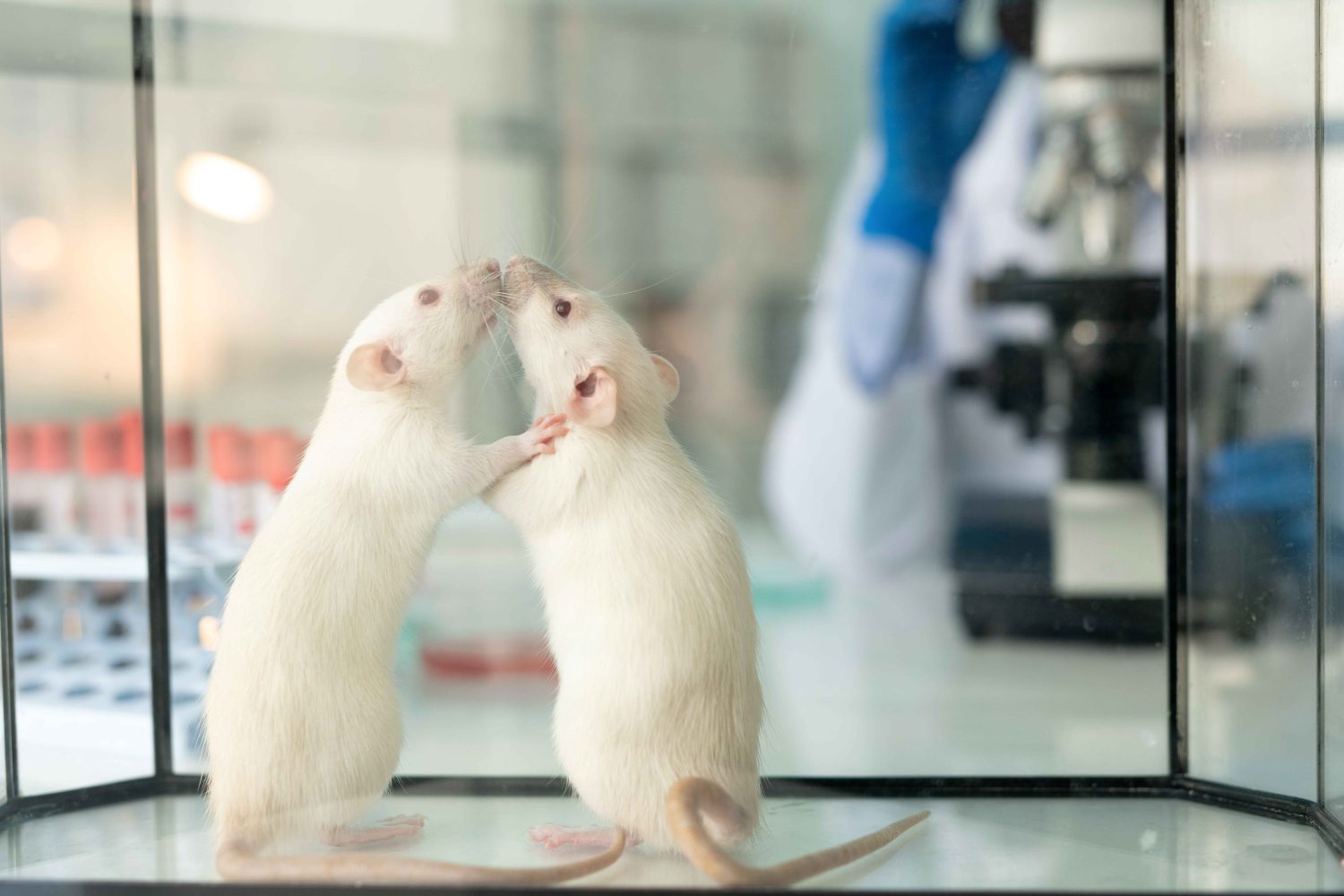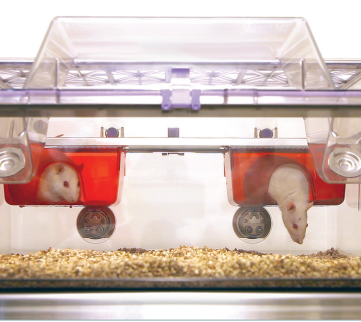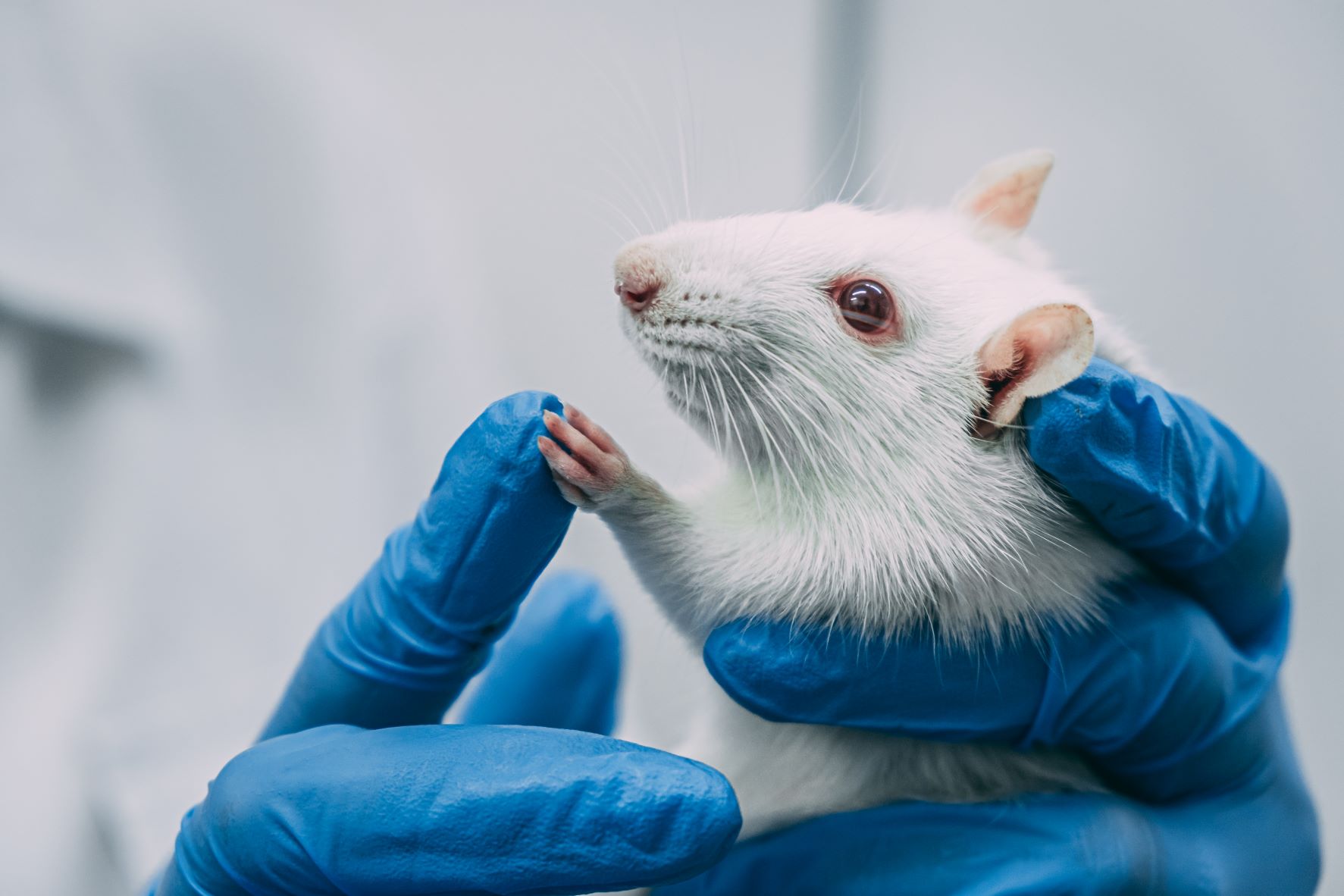As the lab animal science industry takes immense strides toward refinement, enhancing your laboratory rats’ well-being is crucial. Providing laboratory animals with enrichment can vastly improve their overall welfare. And the benefits of prioritizing the welfare of lab animals are plentiful.
For example, research shows that environmental enrichment for laboratory rats helps them cope with stress, reduces anxiety, and improves physiological well-being.1 Plus, many lab animal experts believe environmental enrichment’s positive impact on lab animals’ moods will improve reproducibility in future studies.2 But more research is still needed to understand the full scope.2
Furthermore, some researchers suggest that laboratory rats should receive more than the minimum amount of enrichment.3 For example, the article “A Good Life For Laboratory Rodents?” published in the ILAR journal argues that laboratory rodents deserve a “good life.”3 According to the article, a “good life” for laboratory rodents includes the ability to “express a rich behavioral repertoire, use their abilities, and fulfill their potential through active engagement with their environment.”3
So, if your research goals are shifting toward giving laboratory rats the “good life,” here are some ways that experts are currently doing just that.
1. Give Laboratory Rats Space to Stand Upright
Many researchers agree it’s fundamental for the well-being of laboratory rats to perform species-specific behaviors regularly.4 For laboratory rats, standing upright, straightening their backs, and stretching their limbs are common behaviors in the wild.4
Hence, it’s imperative to provide laboratory rats with enough space to stand upright on their hind legs, with adequate room to stretch and reach.5 What’s more, standing upright seems to be the most commonly expressed species-specific behavior in laboratory rats.4

For example, of the three most enacted behaviors of rats: burrowing, climbing, and standing upright — lab rats seem to stand upright more than burrowing or climbing.4 Therefore, many lab animal science experts believe that a “rat’s ability to stand upright is an inherent component of their welfare.”4
2. Enhance Your Laboratory Rats’ Well-Being With Bedding
Another way to give laboratory rats a “good life” is to ensure that their housing has adequate bedding. And providing laboratory rats with comfortable bedding could improve their lives vastly. Research data suggests the most comfortable bedding for rats may be paper-based bedding.3 Furthermore, paper-based bedding might have fewer harmful health effects.3 Switching to paper-based bedding is just one way you could make a difference.
But simply providing laboratory rats with bedding isn’t enough to optimize their health and happiness. It’s also paramount to maintain bedding. For example, “One solution to ensure low ammonia levels within cages bedded with paper-based bedding is to increase cage-changing frequency.”3
However, changing bedding too frequently could be disruptive to laboratory rats. So, another possible solution could be to “provide deeper bedding, which is associated with lower intra-cage ammonia.”3 Overall, bedding is a central component of a laboratory rat’s life. And not only should bedding be comfortable, but it also needs to be clean.
3. Introduce Enrichment Materials That Support Sheltering, Nesting, and Burrowing
Providing laboratory rats with materials that enable them to shelter, nest, and burrow can also help their overall health and happiness. The article “Good Life For Laboratory Rodents?” published in ILAR states, “the provision of adequate shelter and nesting material to laboratory rodents contribute to a good life on several levels.”6
Additionally, giving rats access to nesting materials or shelters allows them to “actively engage with their environment.”6 And providing laboratory rats with choices to actively engage in their environments is a fantastic way to enrich their lives. For instance, the activity of building a nest is a beneficial activity for lab rats.6 And retreating to that nest is also favorable for their welfare.6
Giving rats the option to retreat to a nest allows them to “control their exposure to perceived threats, bright lights, and ambient temperatures.”6 And providing laboratory rats this type of control in their lives helps them better deal with stress.1
What Kind of Shelters Can Improve Your Laboratory Rat’s Well-Being?
Regarding shelters, rats prefer enclosed nest boxes, with only one opening, instead of tunnel-shaped enrichment items.3 Furthermore, rats prefer dark and opaque shelters more than cardboard or tin.3

According to the Canadian Council of Animal Care (CCAC) , “shelters are standard features in rat housing, as they address behavioral needs and provide comfort for the animals.” And assuring laboratory rats have adequate resources to support their intrinsic need to shelter, nest, and burrow can vastly improve their well-being.4
4. Encourage and Promote Exercise for Laboratory Rats’ Well-Being
Rats are generally exploratory creatures. They typically engage in physical activities, including walking, running, jumping, climbing, and stretching upright on their hind legs.5 Providing laboratory rats with enrichment materials that promote exercise is “an important component of environmental enrichment.”5 The CCAC recommends features that encourage activity, such as climbing structures, exercise wheels, swings, and hammocks.
5. Make Sure Laboratory Rats Can Socialize
Experts in the lab animal science community understand that rats are innately social creatures. For example, wild rats live in large colonies of extended family groups, usually “structured into subgroups, which might consist of pairs, harems with or without offspring, unisexual groups or single males and females.”2
Additionally, research shows that laboratory rats depend on cooperative interactions.2 Cooperative interactions are when two or more animals work together toward a common goal. For example, evidence shows that rats enact prosocial, cooperative behaviors, such as freeing trapped partners and exchanging favors!2
Plus, there’s ample evidence that rats are capable of emotional contagion. Emotional contagion is a feeling experienced by many mammals, including humans.2 Emotional contagion refers to sharing an emotional state with someone. In other words, it’s a basic form of empathy.2 For example, “rats learn to avoid situations that are harmful to others.”2 With a deeper understanding of the social nature of rats, leading laboratory animal experts agree that housing rats socially is best for their social needs.6 That’s why socially housing rats is imperative.6
Learn More About How Allentown Rat 1800 Tall Gives Laboratory Rats the Ability to Stand Upright
Allentown’s NexGen™ Rat 1800 Tall™ Cage and IVC system provides 30.3 cm (303 mm / 11.934 in) of cage height which complies with evolving global rat housing guidelines5 and allows rats to stand upright.

References:
- Guide for the Care and Use of Laboratory Animals. National Academies Press, 2011.
- Schweinfurth, Manon K. “The Social Life of Norway Rats (Rattus Norvegicus).” ELife, ELife Sciences Publications, Ltd, 9 Apr. 2020.
- Makowska, I Joanna, and Daniel M Weary. “A Good Life for Laboratory Rodents?” ILAR Journal, vol. 60, no. 3, 2019, pp. 373–388., https://doi.org/10.1093/ilar/ilaa001.
- Makowska, I. Joanna, and Daniel M. Weary. “The Importance of Burrowing, Climbing and Standing Upright for Laboratory Rats.” Royal Society Open Science, vol. 3, no. 6, 2016, p. 160136., https://doi.org/10.1098/rsos.160136.
- The Canadian Council on Animal Care (CCAC) Program and Guidelines
- Patterson, Kane, et al. “Rats Demand Social Contact, Animal Welfare, vol. 11, no. 3, Nov. 2002.
- Loss, Cássio Morais, et al. “Combining Animal Welfare with Experimental Rigor to Improve Reproducibility in Behavioral Neuroscience.” Frontiers in Behavioral Neuroscience, vol. 15, 2021, https://doi.org/10.3389/fnbeh.2021.763428

